How to Fertilize Bamboo Correctly: Transform Your Garden’s Look
- April 9, 2024
- 0 comment
Discover how to fertilize bamboo correctly, transforming your garden into a lush, vibrant haven with expert tips. Transforming your garden into a haven of lush, vibrant bamboo starts with understanding the nuances of proper fertilization. This guide delves into the art and science behind nourishing these magnificent plants.

Whether you’re a seasoned gardener or a bamboo enthusiast looking to enhance your green space, here you’ll find the insights needed for exceptional growth. Embark on a journey to unlock the full potential of your bamboo garden, ensuring it thrives and transforms the aesthetic of your outdoor sanctuary.
Table of Contents
- Understanding Bamboo
- Optimal Planting Strategies
- The Best Time to Fertilize
- Choosing the Right Fertilizer
- Step-by-Step Guide on How to Fertilize Bamboo
- Common Mistakes in Fertilizing Bamboo
- Pruning Techniques for Healthy Bamboo
- Advanced Fertilization Tips for Seasoned Gardeners
- Maintaining Your Bamboo After Fertilization
- Conclusion
- FAQs
Understanding Bamboo
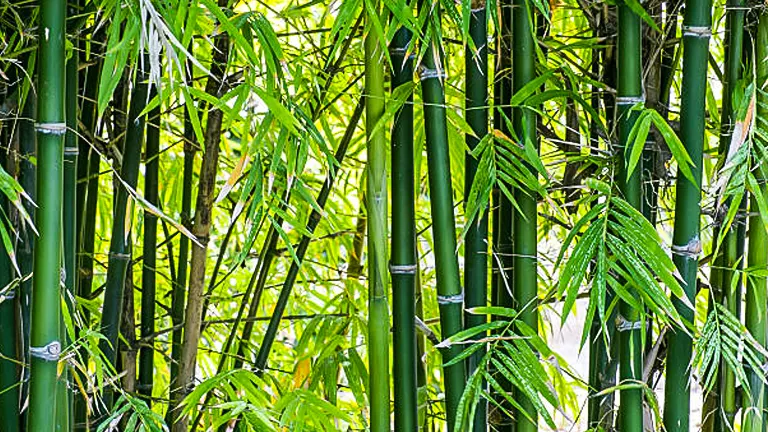
Bamboo, a member of the Poaceae family, is not just a plant but a marvel of nature, exhibiting some of the fastest growth rates in the plant kingdom. Some species can grow up to 35 inches (nearly 90 cm) within a 24-hour period under optimal conditions, a testament to its incredible growth potential. This rapid growth, coupled with bamboo’s ability to adapt to diverse climatic conditions, from cold mountainsides to hot tropical regions, underscores its resilience and versatility.
Scientific Analysis of Bamboo Growth
Bamboo’s growth is powered by its unique rhizome system, a type of underground stem from which shoots emerge. This system allows bamboo to spread and colonize areas rapidly, making it an excellent candidate for erosion control and rapid greening of degraded lands. However, this growth pattern also means that bamboo has specific nutritional needs that must be met to sustain such vigorous development.
The primary nutrients required by bamboo are nitrogen (N), phosphorus (P), and potassium (K), each playing a critical role in its growth cycle:
- Nitrogen is crucial for chlorophyll production and overall growth, promoting lush, green foliage.
- Phosphorus supports the development of roots and rhizomes, essential for the plant’s spread and stability.
- Potassium enhances the plant’s overall health, increasing its resilience to stress, pests, and diseases.
Unique Information
For those with a keen interest in the specifics, here’s a breakdown of the average nutrient uptake for a mature bamboo plant over a growing season:
| Nutrient | Uptake (g/plant) | Function |
|---|---|---|
| Nitrogen | 150-200 | Supports leaf and stem growth, essential for photosynthesis |
| Phosphorus | 30-50 | Critical for energy transfer and root development |
| Potassium | 150-180 | Regulates water uptake and resistance to pests and diseases |
These figures are averages and can vary based on species, soil conditions, and climate. Understanding these requirements is key to optimizing fertilization strategies for bamboo, ensuring that each plant receives the nutrients it needs to thrive.
Optimal Planting Strategies
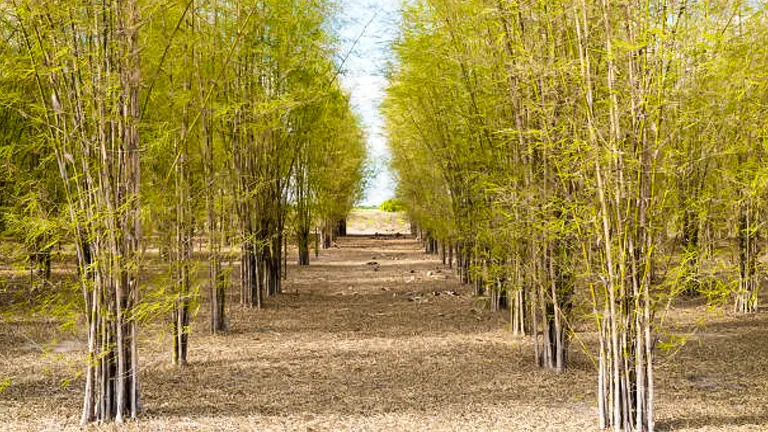
The science behind planting bamboo goes beyond merely choosing a spot in the garden. It involves understanding the unique growth habits of different bamboo species and how they interact with their environment. Bamboo’s growth is influenced by factors such as light, water, nutrient availability, and the physical space it occupies. The right planting strategy can significantly impact the health, growth rate, and aesthetic appeal of your bamboo garden.
Scientific Insight into Bamboo Spacing
Research into bamboo cultivation shows that the spacing between plants directly affects not only their growth but also the ecosystem services they provide, such as carbon sequestration and oxygen production. Precise spacing ensures that bamboo plants have enough room to reach their full potential while maximizing these environmental benefits.
Spacing Guidelines for Different Species
To provide a clearer guide for bamboo enthusiasts, the following table outlines recommended spacing strategies for various common bamboo species, taking into account their growth habits and the density desired in the garden or landscape:
| Bamboo Species | Ideal Spacing for Medium Density (feet) | Ideal Spacing for High Density (feet) | Expected Outcome |
|---|---|---|---|
| Phyllostachys (Running Bamboo) | 5-7 | 3-5 | Fast coverage, suitable for screens |
| Bambusa (Clumping Bamboo) | 7-10 | 5-7 | Dense clumps, minimal spreading |
| Fargesia (Clumping Bamboo) | 4-5 | 3-4 | Ideal for cold climates, compact growth |
| Guadua (Large Timber Bamboo) | 10-15 | 8-10 | Large-scale structures, significant height |
Advanced Planting Considerations
- Light Exposure: All bamboo species require adequate light to thrive, but some can tolerate partial shade. The orientation of your planting can affect light exposure throughout the day, impacting growth and health.
- Root Competition: Bamboo is a competitive plant. Spacing should consider the potential for root competition, not just between bamboo plants but also with other species in your garden.
- Soil Preparation: Prior to planting, amending the soil with organic matter can improve drainage and nutrient content, setting the stage for healthy growth. A soil test can provide specific recommendations for amendments based on your soil type and condition.
- Water Management: Bamboo requires consistent moisture, especially in the first few years after planting. The layout of your garden should facilitate efficient watering practices, either through natural rainfall or irrigation systems.
The Best Time to Fertilize

Fertilizing bamboo efficiently hinges on aligning with its natural growth and dormancy cycles, which are influenced by environmental conditions and the bamboo species’ inherent growth patterns. Bamboo, a highly versatile plant, goes through a vigorous growth phase in spring and early summer when daylight lengthens and temperatures rise. This period sees the emergence of new shoots, which consume a substantial amount of nutrients from the soil as they rapidly grow in height and density.
To cater to this increased nutrient demand, the primary fertilization phase should coincide with the onset of the growth period. Scientific studies indicate that bamboo’s nutrient uptake peaks during these months, making efficient nutrient application critical for supporting this fast growth and ensuring lush, healthy foliage.
As growth slows in late summer, a secondary fertilization phase helps reinforce bamboo’s resilience to environmental stresses, including colder winter temperatures. This late-season application focuses on nutrients that support root development and enhance cellular strength, providing a foundation for the plant’s enduring health and vigor.
Fertilization Schedule
| Growth Stage | Optimal Fertilization Period | Key Nutrients | Purpose |
|---|---|---|---|
| Rapid Growth | Spring – Early Summer (March to June) | High Nitrogen (N) | Supports shoot growth and leaf development |
| Pre-Winter Preparation | Late Summer – Early Fall (August to September) | Balanced N-P-K with emphasis on Potassium (K) and Phosphorus (P) | Enhances root development and strengthens against cold |
Guidance for Effective Fertilization
- Spring – Early Summer Fertilization: Target this period for your primary fertilization, focusing on nitrogen-rich formulations to support the explosive growth of shoots and leaves. This is when your bamboo is most hungry for nutrients.
- Late Summer – Early Fall Boost: As growth tapers off, introduce a balanced fertilizer with an emphasis on potassium and phosphorus to fortify the bamboo’s roots and structural integrity, preparing it for winter.
Choosing the Right Fertilizer
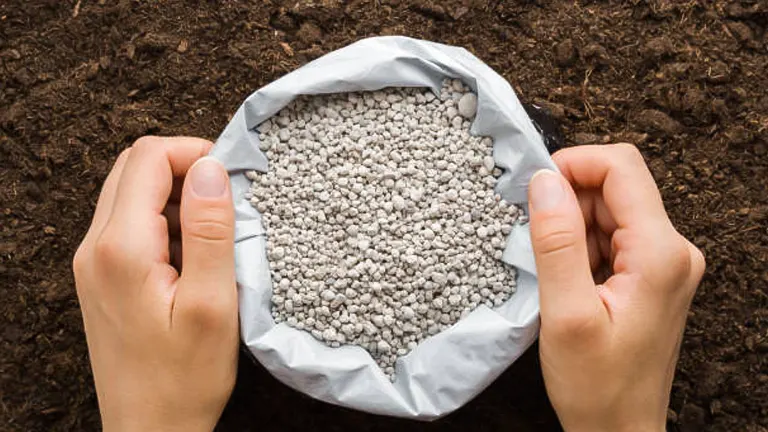
Selecting the ideal fertilizer for bamboo involves a sophisticated balance of science and strategy. Bamboo’s nutritional uptake varies through its growth cycles, necessitating a dynamic approach to fertilization that aligns with its physiological demands.
The Importance of N-P-K Ratios
Bamboo thrives on a balanced intake of nitrogen (N), phosphorus (P), and potassium (K), but the emphasis on each nutrient shifts as the plant progresses from shoot emergence to maturity. Nitrogen is pivotal for fueling the rapid growth and lush greenery of bamboo shoots. Phosphorus supports root development and energy transfer within the plant, essential for establishment and stress resilience. Potassium enhances overall plant health, bolstering bamboo’s resistance to pests, diseases, and environmental stress.
Organic vs. Chemical Fertilizers: A Closer Look
Organic fertilizers, derived from natural sources such as composted manure or bone meal, release nutrients slowly and improve soil health over time. They foster a vibrant soil ecosystem, crucial for bamboo’s long-term nutrition. Chemical fertilizers, on the other hand, provide a concentrated and immediate nutrient supply, which can be beneficial during peak growth phases but must be applied with care to prevent nutrient burn and environmental runoff.
Optimal N-P-K Ratios for Bamboo Growth Stages
| Growth Stage | N-P-K Ratio | Fertilizer Type | Benefits |
|---|---|---|---|
| Shoot Emergence | 3-1-2 or 4-1-2 | Organic/Slow-Release | Supports rapid shoot growth |
| Establishment | 2-2-2 | Organic | Encourages root development |
| Mature Maintenance | 1-2-2 or 2-3-3 | Organic/Chemical | Balances overall health and vigor |
Considerations for Soil Health
A comprehensive soil test offers a roadmap for fertilizer selection, revealing not only nutrient deficiencies but also pH levels and organic matter content. Bamboo prefers slightly acidic to neutral soils (pH 5.5-7.0). Adjusting soil pH, if necessary, can enhance nutrient availability and uptake.
Application Strategy
The method and timing of fertilizer application significantly affect its efficacy. For organic fertilizers, incorporating them into the soil at planting and top-dressing annually in alignment with bamboo’s growth cycles ensures gradual nutrient availability. Chemical fertilizers, if used, should be applied sparingly and in accordance with the growth stage-specific needs highlighted in the table.
Step-by-Step Guide on How to Fertilize Bamboo
Step 1: Understand Your Bamboo’s Needs
- Identify Your Bamboo Type: Determine whether you have clumping (sympodial) or running (monopodial) bamboo, as their nutritional needs and growth patterns differ.
- Growth Stage Awareness: Young, actively growing bamboo has different fertilizer requirements than established plants. Newly planted bamboo needs nutrients to encourage root development, while mature bamboo benefits from a balanced approach to maintain growth and vitality.
Step 2: Select the Right Fertilizer
- Choose an Appropriate N-P-K Ratio: Look for a fertilizer with a balanced N-P-K ratio, such as 10-10-10 or 20-20-20, for general maintenance. During active growth phases, a higher nitrogen content can promote leaf and shoot development.
- Organic vs. Chemical: Consider using organic fertilizers like composted manure, fish emulsion, or a specially formulated bamboo fertilizer to improve soil health and support sustainable growth. Chemical fertilizers can be used for a quick nutrient boost but should be applied carefully to avoid over-fertilization.
Step 3: Conduct a Soil Test
- Test Your Soil: Before applying fertilizer, test your soil to understand its current nutrient composition and pH level. Bamboo prefers slightly acidic to neutral soil (pH 5.5-7). A soil test can guide your fertilizer choice and reveal if any pH adjustments are needed.
Step 4: Timing Your Fertilization
- Best Times to Fertilize: The optimal time to fertilize bamboo is in the early spring as new shoots appear, and again in mid-summer to support continued growth. A light application in early fall can help strengthen the plants before winter.
- Avoid Winter Fertilization: Refrain from fertilizing in late fall and winter when bamboo growth naturally slows, as this can lead to nutrient runoff and waste.
Step 5: Applying the Fertilizer
- Measure Correctly: Follow the manufacturer’s instructions to measure the right amount of fertilizer. Over-fertilizing can harm your bamboo and the environment.
- Application Technique: For granular fertilizers, evenly spread the granules around the base of the bamboo, extending out to the drip line (the area directly below the outer circumference of the bamboo’s leaves). For liquid fertilizers, dilute and apply according to label directions.
- Water Thoroughly: After applying fertilizer, water the area well to help dissolve the granules and carry the nutrients into the soil, making them available to the bamboo roots.
Step 6: Monitor and Adjust
- Observe Plant Response: After fertilizing, monitor your bamboo’s growth and overall health. Signs of effective fertilization include vigorous growth and deep green leaves.
- Adjust as Needed: If you notice signs of nutrient deficiency or excess (such as yellowing leaves or stunted growth), adjust your fertilization plan accordingly. You may need to alter the fertilizer type, quantity, or application frequency.
Step 7: Annual Soil Re-Testing
- Re-Test Soil Annually: Conditions change, and so will the nutritional needs of your bamboo. Annual soil tests can help you stay ahead of these changes and adjust your fertilization practices for optimal plant health.
Common Mistakes in Fertilizing Bamboo
Over-Fertilization: One of the most common errors is applying too much fertilizer, thinking it will accelerate growth. This can lead to nutrient burn, yellowing leaves, and even plant death. Stick to the recommended amounts and observe your bamboo’s response.
Ignoring Soil pH: Bamboo prefers slightly acidic to neutral soil (pH 5.5-7). Ignoring soil pH can hinder nutrient absorption. If your soil test reveals a pH imbalance, address this before fertilizing to ensure optimal nutrient uptake.
Neglecting Seasonal Cycles: Fertilizing at the wrong time can be ineffective or even harmful. Bamboo’s nutrient needs vary throughout the year, with spring and early summer being the critical periods for fertilization. Avoid late fall fertilization, as new growth may not harden off before winter.
Pruning Techniques for Healthy Bamboo
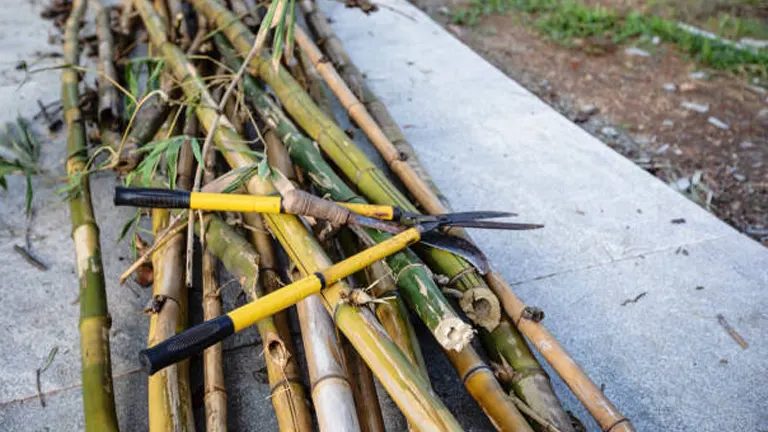
Proper pruning complements your fertilization efforts, encouraging more vigorous and aesthetically pleasing growth. Here’s how to prune bamboo effectively:
- Selective Thinning: Remove older, less vigorous culms (bamboo stems) to make room for new growth. This encourages air circulation and light penetration, vital for the health of your bamboo.
- Height Control: If desired, you can top bamboo culms to control height. Cut just above a node, as new branches will sprout from this point.
- Cleaning: Regularly remove any dead or yellowing leaves and culms, as well as any debris around the base of the plant. This helps prevent disease and pest infestations.
Pruning should be done with clean, sharp tools to avoid damaging the bamboo. The best time for pruning is late winter or early spring, just before the onset of the growing season.
Advanced Fertilization Tips for Seasoned Gardeners
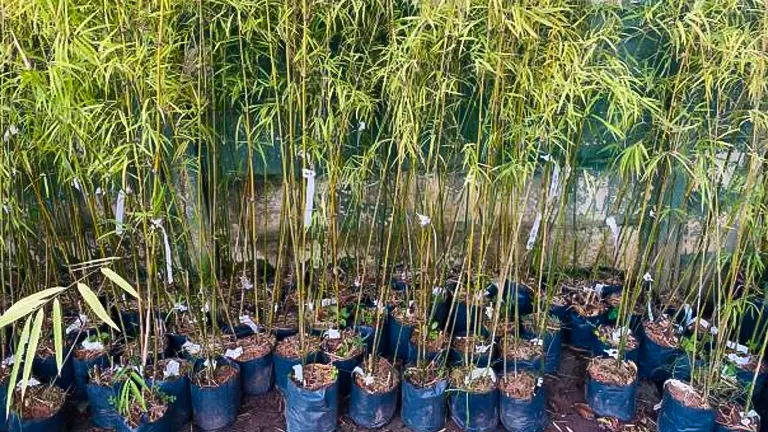
For those looking to elevate their bamboo cultivation, understanding the nuanced requirements of your bamboo can make a significant difference. Here are some expert tips:
- Customized Nutrient Mixes: Based on soil test results, customize your nutrient mix to address specific deficiencies. This tailored approach ensures your bamboo gets exactly what it needs, promoting optimal health and growth.
- Micro-nutrient Supplements: Consider adding micro-nutrient supplements, especially if your soil test reveals gaps. Elements like magnesium, zinc, and iron can boost bamboo’s vitality and resistance to diseases.
- Organic Matter Integration: Regularly incorporate organic matter into the soil around your bamboo. This can include compost, leaf mold, or well-rotted manure, which enhances soil structure, moisture retention, and microbial life, all beneficial to bamboo growth.
- Seasonal Adjustments: Adjust your fertilization strategy based on seasonal changes and bamboo’s growth phases. This may mean reducing nitrogen in favor of potassium and phosphorus in late summer to encourage root development and winter hardiness.
Maintaining Your Bamboo After Fertilization
Post-fertilization care is as crucial as the fertilization process itself. Here’s how to ensure your bamboo continues to prosper:
- Regular Watering: Continue to provide deep, regular watering to support nutrient absorption and new growth. Adjust watering frequency based on weather conditions, ensuring the soil remains moist but not waterlogged.
- Mulching: Apply a layer of organic mulch around the base of your bamboo plants. This helps retain soil moisture, suppress weeds, and gradually adds nutrients back into the soil as the mulch decomposes.
- Monitoring for Pests and Diseases: Keep an eye out for signs of pests or diseases. Early detection and treatment can prevent minor issues from becoming major problems.
- Seasonal Care: Prepare your bamboo for the changing seasons. This may include additional mulching for winter protection in colder climates or pruning to manage growth and shape the bamboo according to your desired aesthetic.
Related Post
- How to Fertilize a Mango Tree Effectively: Tips and Tricks for Healthy Growth
- How to Fertilize Apple Trees: Essential Tips for a Bountiful Harvest
- How to Fertilize Lemon Trees: Secrets for Thriving Citrus
- How to Fertilize Avocado Tree: A Step-by-Step Guide for Lush Growth
Conclusion
Cultivating bamboo that transforms your garden into a lush, vibrant haven requires more than just basic care. It demands an understanding of the plant’s unique needs, thoughtful fertilization, and ongoing maintenance. By following the comprehensive steps outlined in this guide, gardeners at any skill level can achieve healthy, thriving bamboo that enhances their outdoor space’s beauty and ambiance.
FAQs
- What is the best time of year to start fertilizing bamboo?
The optimal time to fertilize bamboo is in the spring, as the new growth begins to appear. A second, lighter application can be beneficial in early to mid-summer to support continued growth. Avoid fertilizing late in the fall, as new growth should not be encouraged going into the winter months. - Can I use a general-purpose garden fertilizer for my bamboo, or do I need something specific?
While general-purpose garden fertilizers can work, bamboo thrives best on fertilizers high in nitrogen. Look for a fertilizer labeled for grass or lawn care, as these typically have the higher nitrogen content that bamboo prefers. - How often should bamboo be fertilized throughout the growing season?
Bamboo should be fertilized at least twice during the growing season – once in early spring and again in early to mid-summer. Depending on the bamboo species and the climate, a third, light application may be beneficial in late summer. - Is organic fertilizer better for bamboo than synthetic?
Both organic and synthetic fertilizers can be effective for bamboo. Organic fertilizers improve soil health over time and are less likely to cause nutrient burn, making them a safer, albeit slower, option. Synthetic fertilizers offer a quicker nutrient release, which can be beneficial during the peak growing season. - How do I apply fertilizer to my bamboo without causing harm?
Apply fertilizer evenly around the base of the bamboo, extending out to the drip line. Avoid placing fertilizer directly against the stem or culms. After applying, water the area thoroughly to help disperse the nutrients into the soil and prevent root burn. - What signs indicate that my bamboo is over-fertilized?
Signs of over-fertilization include brown, crispy leaf edges, wilting, and yellowing foliage. In severe cases, the bamboo may exhibit stunted growth or dieback. If you suspect over-fertilization, reduce or skip the next scheduled fertilizer application and water deeply to help flush excess nutrients from the soil. - Can mulching replace the need for fertilizing bamboo?
Mulching provides numerous benefits, including moisture retention, temperature regulation, and adding organic matter to the soil as it decomposes. While it can complement fertilization by slowly releasing nutrients, it typically cannot replace the need for fertilizing bamboo, especially for ensuring vigorous growth and lush appearance. - How should I adjust my fertilization technique for bamboo planted in containers?
Bamboo in containers may require more frequent fertilization but in smaller amounts, as nutrients can leach out with regular watering. Use a liquid fertilizer diluted to half the recommended strength every 4-6 weeks during the growing season. Monitor the bamboo’s growth and adjust the frequency and strength as needed to avoid over-fertilization.
This guide was designed to equip you with essential techniques for correctly fertilizing bamboo, setting you on the path to significantly enhancing the care of your bamboo. Here’s to a garden brimming with robust, flourishing bamboo!

Benjamin Brooks
Forestry AuthorGreetings! I'm Benjamin Brooks, and my journey over the past 15 years has revolved around the fascinating realms of content creation, expertise in snow clearing, and the intricate world of lumberjacking and landscaping. What began as a simple curiosity about the natural world and heavy machinery has evolved into a passionate profession where my love for crafting words intertwines seamlessly with my lumberjacking and garden skills.



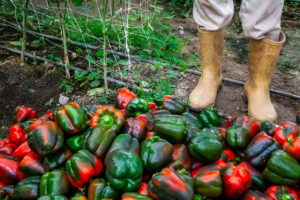









Leave your comment